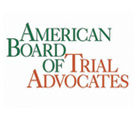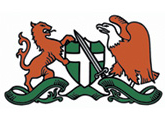A recent article by the Los Angeles Times shows that California is on top of the list of the most dangerous states for pedestrians in the United States. Within three years (2013 to 2015), over 700 pedestrians succumbed to their injuries. According to the GHSA (Governors Highway Safety Association), pedestrian deaths across the country rocketed by 16% in 2016. This data suggests a grave nationwide problem, although Los Angeles statistics for hit and runs are outright depressing. Another report showed that the city is ground zero for pedestrians, with about 20,000 hit and run incidents each year.
Pedestrian fatalities in Los Angeles are almost three times the national average. Fortunately, California laws protect pedestrians who are killed or injured in an accident. If you or your loved one is a victim of a pedestrian accident, you deserve compensation for all damages suffered. A reliable personal injury attorney can increase your chances of receiving maximum payment that will allow you to focus on your recovery.
Who Is Liable For a Pedestrian Accident; Pedestrian Protections Under California Laws
To understand who is liable for a pedestrian accident, you must first understand what the laws provide. Generally, you must investigate the cause of a crash before you can point out who is legally liable for damages suffered. The person who could prevent a collision may be to blame for the incurred medical bills, property loss, lost wages, pain, suffering, and more.
Some of the common causes of pedestrian accidents include:
- Distracted driving
- Driving under the influence of alcohol or drugs
- Over speeding
- Fatigued driving
- Breaking traffic laws
Often, the driver is at fault for an accident or could have prevented it. If you have suffered injuries because of a reckless driver or negligent driver, your personal injury lawyer can help to bring them to book. On the other hand, a skilled lawyer can help you file a claim against the government if roadway defects cause an accident.
According to California laws, this much is untrue:
- “Pedestrians always have the right-of-way.”
- “The driver is always at fault because a human is no match for a metallic automobile.”
Sometimes, a pedestrian is entirely at fault for an accident. It is also possible for pedestrians to bear part of the fault for an incident. Under California laws, both drivers and pedestrians have a right to use roadways and therefore are responsible for each other. If you are a driver, you must exercise reasonable care to prevent the risk of hitting a pedestrian. On the other hand, pedestrians must exercise proper care when using roadways.
Here are essential laws you should know:
Vehicle Code 21950
Under Vehicle Code 21950, pedestrians have the right of way. Therefore, drivers must yield and give passage within:
- Marked pedestrian crosswalks
- Unmarked pedestrian crosswalks at intersections
The same code imposes a duty of care on pedestrians. When crossing a street, you must exercise due care to protect yourself and other road users.
Vehicle Code 21950(c)
VC 21950(c) tasks drivers with the responsibility to exercise due care when moving towards pedestrians walking along a marked or unmarked crosswalk. The law states that a motorist must:
- Slow down
- Exercise due care to avoid the risk of an accident
An excellent example of failing to exercise due care is when a motorist approaching a crosswalk increases their speed in the attempt to beat a pedestrian to the zebra crossing. When a driver fails to yield at a crosswalk or exercise due care, and no accident occurs, the court may impose the following penalties:
- A fine not exceeding $238
- A ticket capable of adding 1 point on their DMV driving record
Even though the imposed fine may appear minimal, there are significant downsides to having a point on your driving record. Even one extra point can increase a motorist’s insurance rates dramatically. Furthermore, accumulating a certain number of points within a year may result in the DMV declaring you a negligent operator. To ensure the safety of pedestrians and other road users, the DMV is obligated to revoke or suspend the driving privileges of careless vehicle operators.
Vehicle Code 21950(b)
VC 21950(b) imposes specific responsibilities on the pedestrian when using crosswalks or just crossing the street. These responsibilities include:
- Pedestrians must not run into the path of a moving vehicle in a way that causes an immediate risk of harm
- When using the crosswalk, you must continue walking to avoid delaying the traffic
If you suffer a pedestrian accident, a skilled lawyer can help to investigate your case and guide you on the best way forward. Note that both pedestrians and drivers have to be aware of their surroundings when using the roads. While following the right-of-way laws may save a motorist from criminal charges, this doesn’t necessarily absolve their fault. For instance, drivers are liable for damages even if they hit a jaywalker when the traffic lights turn green.
Other laws under Vehicle Code 21950 include:
- Motorists must not stop in the middle of crosswalks forcing pedestrians to walk dangerously around a vehicle
- Drivers must not overtake any car that has stopped at a crosswalk. It could be that the motorist ahead is waiting for a senior or physically challenged pedestrian to cross safely.
- Motorists must not drive on sidewalks unless when accessing alleyways or a garage. When using sidewalks, pedestrians have the upper hand when it comes to the right of way.
- Drivers must yield to blind pedestrians who pull out their cane and step towards the curb. They must also stop their automobiles at least 5 feet away from an intersection. The visually challenged focus can tell the proximity of a car based on the sound produced, meaning you don’t need to give any verbal instructions.
How Is Fault Established In A Pedestrian-Car Accident?
Generally speaking, pedestrians have the right of way. However, they can also be liable for an accident in certain situations. Some of the scenarios where a pedestrian may be to blame for an accident include:
- Failure of a pedestrian to follow traffic signals
- Crossing streets along areas not marked as crosswalks
- Darting into the road with no regard for motorists
- Crossing highways where pedestrian access is forbidden
- Jaywalking on a marked or unmarked crosswalk
Even when a pedestrian is at fault, the driver may still bear part of the fault for an accident. Note that California laws task both motorists and pedestrians with the responsibility of being aware of their surroundings. For instance, a driver may be partially at fault if they were overspeeding within a residential area.
When the driver is clearly at fault, a pedestrian can recover full compensation from the motorist or their insurance company. One of the core reasons you must work with an experienced personal injury attorney is that insurance companies will not just offer compensation without fighting. Your lawyer can help you create a counteroffer to ensure you receive the maximum settlement for all damages.
Note that pedestrians can still bear full blame for an accident. For instance, an intoxicated teenager who darts into the road forcing a driver to swerve and hit a post, may be blamed for the incident. In this case, a motorist can sue the passenger to recover compensation for injuries and damages.
Proving who bears the fault for a pedestrian accident is no easy feat. Your lawyer can help you build a solid case by organizing the required paperwork and documentation that can help establish a driver’s negligence.
Here are the materials the insurance company, police, and your attorney may use to establish fault:
Police Report
When a pedestrian is hit by a car, the chances are that the police will arrive at the scene and create an official accident report. Some of the details on the report may include:
- Weather conditions impacting the road conditions
- Time of the accident
- A rough draft of the accident scene
- Any witness statements
- The opinion of the responding police regarding who’s at fault
- Crucial citations such as a drunk or a speeding driver
Even though insurance companies don’t necessarily settle claims based on police reports, the information gathered by the authorities carries some weight. After all, the police are considered a credible source because they generate accident reports from an unbiased standpoint.
Witness Statements
Finding liability in a pedestrian accident can be easy if eyewitnesses give their account of what happened. While a motorist may create a falsified turn of events, witnesses will always remain neutral when telling how a crash unfolded. The statements of several witnesses can help reconstruct the accident scene and establish who is at fault.
Photos or Video Footage
Often, crosswalk areas have surveillance cameras. Furthermore, businesses located close to a crosswalk may also have surveillance that can provide an accurate account of the fall of events leading to an accident. Such evidence can go a long way in helping to establish liability in a pedestrian accident.
If you are injured, it’s always best to take photos of the scene if possible. Even a snapshot of how far your groceries scattered following impact may help establish the speed at which a vehicle was moving at the time of an incident. A reliable personal injury attorney may also determine whether eyewitnesses took images of the scene using their phones.
Expert Testimony
Contrary to popular belief, pedestrian accidents are not always straightforward. For instance, it’s easy to assume that pedestrians are at fault if they seem to dart into an oncoming vehicle. If your account of what happens conflicts with the report of a motorist, it may be necessary to seek an expert’s opinion.
Generally, forensic experts can gather evidence to help reconstruct an accident. For instance, based on the nature of the injury suffered, the professional can tell a driver’s average driving speed. While it’s not guaranteed that the testimony will lay complete blame on a motorist, it may increase the chances of a pedestrian receiving a decent percentage of the total compensation for damages.
Medical Records
The medical records of a pedestrian are also a critical component in establishing fault. Most importantly, they aid in placing a value on the injuries and suffering of a victim.
Your attorney and the involved insurance company are likely to calculate the value of a settlement based on the incurred medical expenses. Additionally, proper compensation will always consider lost wages.
Other damages compensation should cover include:
- Physical and occupational therapy
- Counseling
- Lost earning capacity
- Scarring or disfigurement
- Loss of limb
- Pain and suffering
- Loss of consortium (if a pedestrian has a spouse or a registered domestic partner)
Can Fault Be Shared In A Pedestrian Accident?
When a pedestrian is partially to blame for an accident, they cannot receive full compensation for damages suffered. For instance, a pedestrian jaywalking along a crossway may bear part of the blame in case of a crash. On the other hand, if they are hit by a speeding vehicle, the driver in question will also bear a specific percentage of the fault.
Fortunately, California follows a comparative negligence rule instead of contributory negligence rules. In states like Virginia, Maryland, and Alabama, the courts follow an all-or-nothing system (contributory negligence). This means that if a pedestrian bears any amount of fault, they may not collect a coin in compensation from the other at-fault party.
Comparative Negligence
The comparative negligence system is when a pedestrian receives compensation that only amounts to a driver’s percentage of fault. For instance, a jaywalking pedestrian may bear 25% of the responsibility if hit by an intoxicated or overspeeding driver. In this case, the motorist is only liable for 75% of the damages for an accident.
Once your attorney calculates your damages and arrives at a total of $10,000, for example, you can only receive $7,500. In short, the remaining $2,500 stands for your share of the fault in an accident.
How to Ensure Maximum Compensation Once Fault Is Established In a Pedestrian Accident
As aforementioned, the task of establishing fault can be nerve-wracking. Your pedestrian accident attorney may need to gather evidence from eyewitnesses, surveillance footage close to a crosswalk, and even the police report, among other sources. While it is normal to feel stressed and confused right after an incident, the steps you take may play a significant role in determining whether you can recover a maximum settlement for damages suffered.
Here is what you should do following an incident:
- Remain in the same spot and check yourself for injuries
- Call the authorities and inform them about the location of an accident
- Exchange contact details with the driver that hit you
- Take a video or photos of the scene and ensure they are as clear as possible
- Talk to eyewitnesses and request their names and contact details
- Seek medical attention whether you have apparent injuries or not
- Request for a copy of the police report and keep all your medical records intact
- Contact your attorney for assistance with the legal process of filing a claim
One of the most important things to do is to avoid admitting fault. Whether you were absent-minded and darted into the crosswalk or the motorist was clearly negligent, do not imply that you are partially to blame for the accident. Instead, call your attorney and discuss these details for proper legal guidance.
Don’t worry if an injury leaves you with significant injuries, and you can hardly lift your body from the asphalt. Your personal injury attorney can handle everything from start to finish as you focus on your recovery.
Statute Of Limitations for California Pedestrian Accidents
If you have suffered injuries following a pedestrian accident, the sooner you file a claim, the better. Even if you are hospitalized and unable to go through the legal process in person, your lawyer can offer the much-needed assistance. In California, the statute of limitations for pedestrian accidents is two years from when an accident occurred.
If this period has elapsed, all may not be lost. The laws have certain exceptions that apply to particular cases. Your attorney will evaluate your case and tell you whether it’s still possible to file a personal injury lawsuit.
Find a Los Angeles Car Accident Attorney Near Me
A pedestrian accident may leave you with more than just physical injuries. An incident could also cause loss of wages, loss of earning potential, loss of consortium, and tremendous pain and suffering to both the victim and their family. If you have suffered injuries, we invite you to contact Los Angeles Car Accident Attorney. We can fight for your best interests and help you recover maximum compensation for all damages suffered. We understand that life can turn stressful after an injury. That is why our dedicated team will not take a dime less than what you truly deserve. With a strong team in your corner, you will have better chances of receiving a fair settlement. If you have questions about pedestrian accidents or would like to schedule a free consultation, call us now at 424-237-3600.






